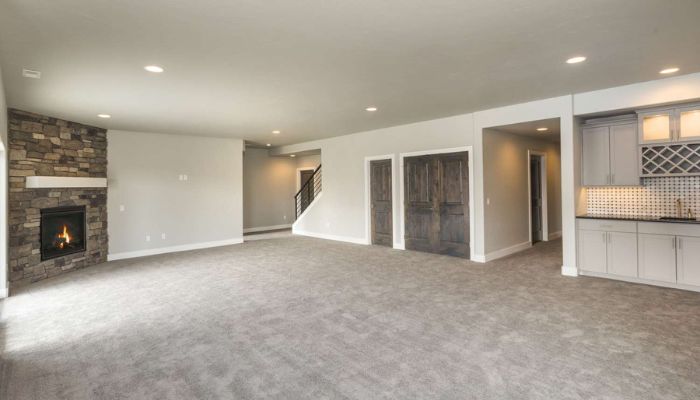Carpeting a basement might be difficult because of the constant dampness and humidity. The correct carpet, however, may transform your cold basement into a comfortable living area that requires no maintenance.
Various carpet fibers, pile heights, and cushioning choices will be discussed, along with our picks for the finest carpet for basements. How to put carpet in a basement and keep it looking good for years will also be covered. Let’s read below “Best Carpet for Basement”:-
Types of Carpet Fibers for Basements
Carpet fibers can either be natural or synthetic. Wool and cotton are good examples of natural fabrics, but they tend to absorb more water than synthetics, making them less than ideal for damp environments like basements. Since they are more resistant to moisture and cleaning agents, synthetic fibers like nylon, polyester, and olefin are preferable for basements.
Nylon
The majority of basement carpets nowadays are made of nylon. It is long-lasting, resistant to stains, and simple to clean. Additionally, the price of nylon carpet is low, making it an excellent investment.
Polyester
Basement carpet made of polyester is another viable alternative. It’s tough and won’t soak up spills like nylon will, but it’s not quite as comfortable to wear. The cost of polyester carpeting is often lower than that of nylon carpeting.
Olefin
Oil refineries produce olefin, a synthetic fiber. It is resistant to moisture and wear, making it a fantastic option for damp environments like basements. Olefin carpeting is both low-priced and simple to maintain.
Wool
Wool is a natural material that is both warm and comfortable to wear. Wool carpet, however, is not recommended for basements due to its high moisture absorption rate. Installing wool carpet in a basement without first installing a moisture barrier is a recipe for disaster.
Cotton
Cotton is another organic material that shouldn’t be used in subterranean spaces. Cotton carpet is also notoriously tough to clean due to its high absorption of moisture.
Pile Heights for Basement Carpet
A carpet’s pile height describes how long its individual strands are. The carpet fibers in low-pile carpets are shorter than those in high-pile carpets.
The finest carpet for basements is low-pile carpet. When compared to high-pile carpet, it is both more manageable and faster to dry. In addition to reducing the likelihood of mold and mildew formation, low-pile carpet is less likely to retain moisture.
If you’re looking for a velvety and comfortable flooring option for your basement, high-pile carpet may be the way to go. However, remember that if high-pile carpet becomes wet, it will take longer to dry.
Padding for Basement Carpet
Padding is a substance used to separate the subfloor from the carpet. Padding has two purposes: it softens the surface and it muffles sounds. Water is less likely to be able to penetrate the carpet and reach the subfloor if you do this.
The two most common types of carpet cushioning are foam and rubber. Rubber cushioning is more expensive and less widespread than foam padding. Rubber cushioning is more expensive but lasts longer and insulates better than other types of padding.
Installing Carpet in a Basement
There are a few things you need to do to the subfloor before placing carpet in the basement. The first step is to ensure a smooth and even subfloor. Fill and sand any fissures or holes you see. The subfloor must also be spotless and uncluttered.
Padding can be laid down once the subfloor has been prepped. The cushioning needs to be tailored to the dimensions of the room and placed smooth side up.
The carpet can be laid atop the padding thereafter. The carpet must be fastened down to the subfloor and seamed together at the seams.
Caring for Carpet in a Basement
Carpet in a basement needs regular vacuuming to keep it clean. It’s crucial to dry the carpet as quickly as possible if it gets wet. After using a wet/dry vacuum to extract as much water as possible, you can speed up the drying process by using a fan or dehumidifier.
You may need to shampoo the carpet more frequently if you have pets. A pet odor remover might also be useful for this purpose.
The carpet in your basement can last for years if you take good care of it.
Conclusion
Investing in quality basement carpeting is a must. The characteristics listed here will help you pick a carpet that will serve you well for many years to come. There are a few things you need to do to the subfloor before placing carpet in the basement. The first step is to ensure a smooth and even subfloor. In this article, we have given information about “Best Carpet for Basement.” I hope you Like it.

